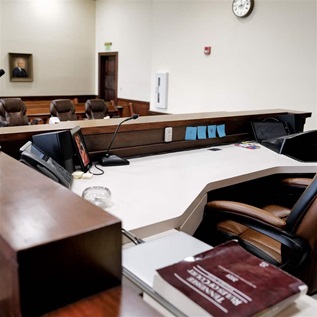900,000 Students Blocked from Federal Student Loans
Nearly one in 10 community college students in the U.S. cannot get a federal student loan – the safest, most affordable way to borrow for college – because their schools choose not to participate in the federal loan programs. A new issue brief from the Project on Student Debt found that more than 20 percent of the community college students in seven states have no access to federal loans, including six states (AL, GA, NC, LA, TN, VA) in the southern U.S. African-American and Native-American students were twice as likely as other students to lack access to federal student loans.
Despite low tuition, the average total cost of attending a two-year community college ($14,054) is three-fifths that of a four-year public college ($18,326). Federal loans can help students afford college costs, including textbooks, transportation, and housing when grants and scholarships fall short. The brief, Getting with the Program: Community College Students Need Access to Federal Loans, warns that students who need to borrow may turn to risky and expensive private student loans or credit cards when federal loans are not available. Other students may drop out, work excessive hours, or take fewer classes – all choices that reduce their odds of earning a degree or certificate.
“It's important that community colleges provide access to federal loans for students who need them,” said U.S. Under Secretary of Education Martha Kanter. “I would urge community college leaders and administrators to read this report carefully and consider their institutions' stance on this issue.”
Community colleges that do not participate in the federal loan program often cite fears of high default rates and related sanctions, and a desire to protect their students from debt. The brief, however, finds that default rates are not an imminent danger for community colleges, and that opting out of the federal loan programs does not keep students from borrowing – it only keeps them from taking out federal student loans. The brief recommends that colleges provide access to federal loans along with appropriate financial aid counseling.
While a relatively small percentage of community college students take out student loans, the number is growing, from 9 percent in 2003-04 to 13 percent in 2007-08. The share of community college students taking out risky private student loans quadrupled during that period (from 1 to 4 percent.) Nearly two-thirds (64 percent) of community college students with private loans did not take out safer federal loans in 2007-08. In comparison, only 20 percent of private loan borrowers at other types of schools did not take out federal loans that year.
“With the economy down, more people are enrolling in community colleges, and they are more likely to need every financial aid option available,” said Deborah Frankle Cochrane, program director at the Institute for College Access & Success and the report's lead author. “We hope to dispel some of the myths about offering federal loans and expand access to financial aid for students who need it.”
The Project on Student Debt is an initiative of the Institute for College Access & Success, a nonprofit, nonpartisan organization working to make higher education more available and affordable for people of all backgrounds. For more information see www.projectonstudentdebt.org and www.ticas.org.
Pew is no longer active in this line of work, but for more information, visit the Project on Student Debt Web site or visit the The Project on Student Debt on PewHealth.org.











